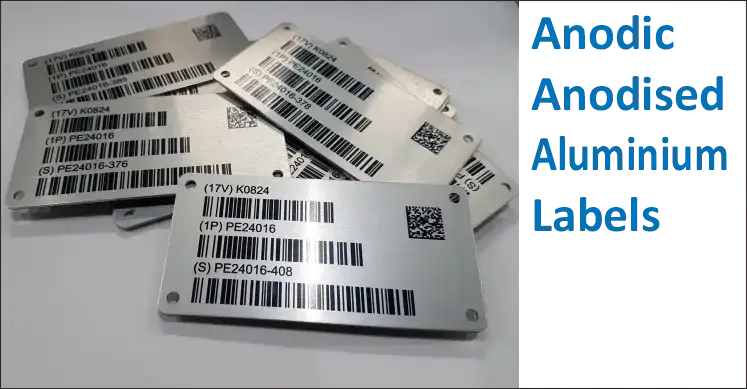Anodised Aluminium labels
What is Anodised Aluminium?Anodising is an electrochemical process that transforms the surface of aluminium into a durable, corrosion-resistant anodic oxide layer. This finish is not only decorative but also enhances the metal’s natural resistance to wear and environmental damage. During the process, special dye inks are absorbed into the porous anodic layer—penetrating up to 15 microns deep—creating printed images and information that are far more resistant to abrasion than surface-printed alternatives. The result is a permanent image embedded into the aluminium itself. The anodised coating is exceptionally hard and durable. It will not peel, and under normal conditions, it will never wear through. Advantages of Anodised AluminiumAnodised aluminium nameplates and labels are widely used across industries thanks to their exceptional properties:
Common ApplicationsAnodised aluminium is highly versatile and perfect for:
Variable Information & MarkingAluminium is ideal for variable data such as consecutive numbering, barcodes, or QR codes, which can be added during production. Additionally, customers can mark the plates permanently on-site using metal punches or engraving tools. Mounting OptionsNameplates can be mounted using:
|
|
 |



